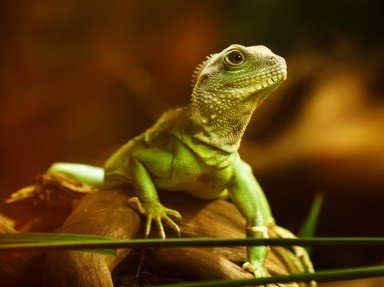Quiz Answer Key and Fun Facts
1. Which of these is the inland (or central) bearded dragon's real name? (this is the most commonly kept bearded dragon).
2. Only the male bearded dragon exhibits the characteristic puffed up 'beard'.
3. The bearded dragon has a habit of taking a rest from daily activities that can last for a long time during a temperature drop in its habitat. Similar to hibernation, it eats little and moves around even less. What is the phenomenon called for the bearded dragon by herpetologists or reptile specialists?
4. Which of these behaviors is one of the most easily observed communication methods of the bearded dragon?
5. Impaction is when the digestive system is overworked and food does not pass out of it, causing death. This is the result of overfeeding or improper feeding in most cases. What is one of the tips that experts give to avoid this?
6. In many parts of Australia from where the bearded dragon originates, it is illegal to export or sell bearded dragons.
7. Which of the following would probably kill your bearded dragon if he or she ate it?
8. When a female bearded dragon is ready to lay her clutch of eggs, what is the typical behavior?
9. The bearded dragon needs to eat salad greens, vegetables, and fruit as part of a varied diet along with its protein.
10. Why is it very important to practice good hand washing techniques when handling a bearded dragon?
Source: Author
Bruyere
This quiz was reviewed by FunTrivia editor
crisw before going online.
Any errors found in FunTrivia content are routinely corrected through our feedback system.


